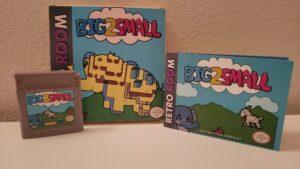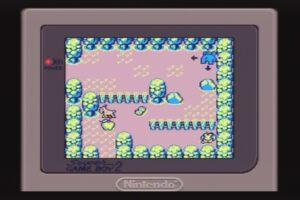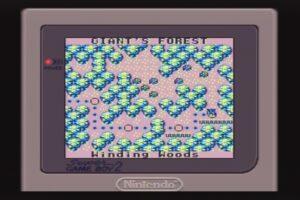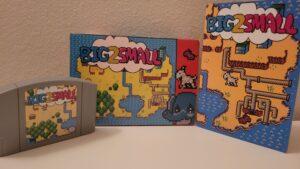
Story:
Big2Small doesn’t have much of a story, other than the characters finding they are in the woods together. Each has a separate goal as they traverse the environments that they find themselves in.

Gameplay:
The way the game plays appears simple on the surface but is anything but simple. You take control of Elle the elephant, Gisele the goat, and Melanie the mouse. The goal is to solve each puzzle by getting each animal to the food that it needs. Elle needs to reach the peanut, Gisele, the apple, and Melanie needs to reach the cheese.
Characters can move in one of four directions but don’t move on command. Instead, once you select a character to move in a specific direction, they will go in the chosen direction until it hits another character, an object in the playing field, or a wall. Each puzzle counts as a level with there being a dialogue between characters either before or after a level is completed. The levels get progressively harder the further into the game you get.

Graphics and Performance:
Graphically, the game is played from a top-down perspective that is borderline aerial, but isn’t. Everything in the game is 2D and looks very good regardless of the way you play it or the platform it’s played on. The Game Boy version supports a color palette on the Game Boy Color but not full color, while the Super Game Boy has a lot of different color pallets to choose from within the carts software and doesn’t need to rely on what is on the cart. The Nintendo 64 port is in full color and despite being entirely 2D, looks and plays great. You would think taking a game that was meant for a handheld would look terrible when ported to the Nintendo 64 but it looks stunning and the fact it’s full color is a welcome surprise.
Performance with the game is what you would expect. Given it’s a puzzle game, there isn’t much to the game so you won’t see any slowdown or anything like that. The game performs the same no matter what version you’re playing and the hardware that you’re playing it on, at least in my case for the sake of this article. I tested the game on the RetroN5, Game Boy Color, Super Game Boy 2, and the Nintendo 64, with all of them having zero issues with performance and no difference in the way they performed.

Sound:
The music in the game fit’s the game very well for a Game Boy game that is at its core, a puzzle game. The music changes slightly between levels and areas as you progress through the game. It’s a bit on the repetitive side in the sense that there isn’t enough variety in the tracks. I would have liked to see the Nintendo64 port take advantage of the hardware it was made for by offering superior music to its handheld counterpart. But at the same time, I understand and respect the decision for it to remain true to its roots as it’s originally a game made for a handheld that was released back in 1989.

Conclusion:
If you enjoy puzzle games, you will find a lot to like about this game. With the game having so many ports, you have the choice to play the game on whatever platform you like. If you want a portable puzzle experience with the option of playing from a couch, you can get the Gameboy port. If you want to play the game in full color and have it look vibrant and nice on a television, you can get the game on the Nintendo 64 or on the Dreamcast when that port is released.
I would definitely recommend picking up this game if you’re looking to get a challenging and fun puzzle game, or if you’re just looking for something different and new.
Disclaimer: Physical copies featured in this article were provided by the publisher for purposes of this review. Purchase links for the games can be found here.

